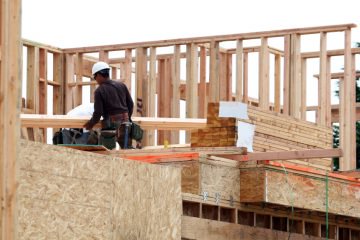Is There a Solution to the Housing Crisis?
It’s well known that homeownership is in decline. In fact, it’s at the lowest level for three decades. But is there a solution to the housing crisis?
Claire Carponen, of the HomeOwners Alliance, has taken a look at the main problems and possible solutions to the UK’s housing crisis.
The average wage in the UK is £26,500, while the average house price is over £200,000. It doesn’t take a mathematician to work out that the odds of buying a house for a first time buyer are pretty slim.

Is There a Solution to the Housing Crisis?
Carponen claims that the gap between wages and house prices is one of the main barriers to homeownership.
According to a report from the Resolution Foundation, homeownership has dropped to its lowest level for three decades. After hitting a peak of 71% in 2003, the number of households that own their home has now dropped to just 64%.
But don’t be fooled into thinking this is a new trend. Four years ago, the HomeOwners Alliance published a report named The Death of Dream: The Crisis in Homeownership in the UK, which found that homeownership has been in decline for years.
Although the recession did accelerate the rate of decline, it is not a short-term blip caused by financial difficulty, but rather a long-term trend.
Carponen reports that affordability remains an issue in the south of England, but is now spreading to other parts of the country. The Resolution Foundation’s report warned that while the news focuses on the housing crisis in London, those living in Manchester are actually facing greater difficulty in getting onto the property ladder.
While the south has typically had higher house prices, the north is catching up, with both Manchester and Yorkshire experiencing steep drops in homeownership.
The CEO of the HomeOwners Alliance, Paula Higgins, recently said in an article in The Telegraph: “The decline of homeownership and the lack of affordable housing is having – and will increasingly have – profound, long-lasting and adverse economic and social consequences.”
Although housing has become so unaffordable, Carponen has found that most people still aspire to own their own homes.
Being a homeowner is much more than just owning a pile of bricks and mortar, she insists. Those that own their own home are more likely to have a better quality property, a sense of stability and permanence, and a financial safety net for old age.
And while the Government is trying to help with its first time buyer initiatives, its schemes aren’t reaching enough people, believes Carponen. Although it proudly announced in March that its Help to Buy scheme has helped 180,000 first time buyers get on the property ladder, this was over a three-year period.
The fact that not enough homes are being built has been well documented. But Carponen warns that more homes may not necessarily solve the housing crisis. In central London, thousands of new homes are currently under construction or in the pipeline, yet most will be unaffordable for the majority of people who are living and working in the capital.
Higgins insisted: “We must make sure that the homes being built are of the right quality and meet the needs of the ultimate owners – last time buyers as well as first time buyers – and not the housebuilder.”
While many young people are struggling to get a foot on the property ladder, landlords must remember to provide safe, suitable and secure homes for those forced to live in the private rental sector.









